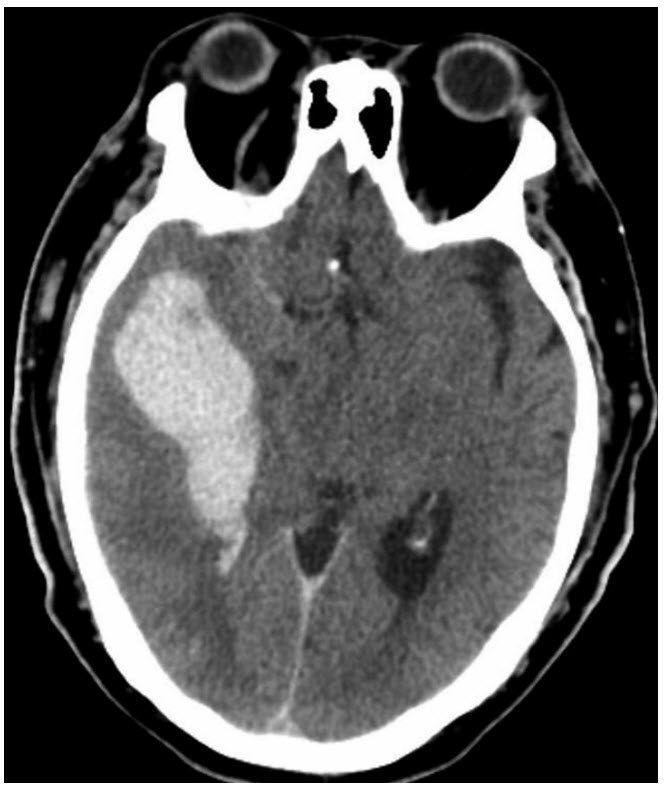Question 8#
A 47-year-old female with a past medical history of diabetes mellitus and asthma fell down a flight of stairs. When EMS arrives, she is unconscious (GCS 4). She is intubated in the field and brought to the ED. In the ED, she is found to have extensor posturing. CT head is obtained and shown below:

Axial noncontrast head CT. There is a large right temporal intraparenchymal hemorrhage with surrounding edema. There is mass effect with uncal herniation and compression of the midbrain and loss of the quadrageminal and ambient cisterns.
Which of the following is true about decompressive hemicraniectomy?
A. It reduces long-term disabilityB. It reduces mortality rates
C. Smaller hemicraniectomies are preferable to larger ones
D. The primary benefit is in reducing the risk of posttraumatic epilepsy
E. The skull on the opposite side of the contusion must be removed to reduce contrecoup swelling
Correct Answer is B
Comment:
Correct Answer: B
Decompressive hemicraniectomy is a major life-saving surgical procedure that has been shown to reduce mortality in patients with severe TBI. It helps to relieve the pressure on brain structures by removing some portions of the skull, allowing the brain to swell outward. Based on the brain trauma foundation guidelines, large decompressive hemicraniectomies are recommended over smaller ones and are generally done on the side with the large contusions. Though they have been shown to reduce mortality, they achieve this by moving more of these patients into the “disabled” category. Posttraumatic epilepsy is occasionally seen after traumatic brain injuries, but preventing future seizures is not the primary reason for performing decompressive hemicraniectomy in TBI.
References:
- Cooper DJ, Rosenfeld JV, Murray L, et al. Decompressive craniectomy in diffuse traumatic brain injury. N Engl J Med. 2011;364(16), 1493-1502.
- Hutchinson PJ, Kolias AG, Timofeev IS, et al. Trial of decompressive craniectomy for traumatic intracranial hypertension. N Engl J Med. 2016;375(12), 1119-1130.
- Moon JW, Hyun DK. Decompressive craniectomy in traumatic brain injury: a review article. Korean J Neurotrauma. 2017;13(1):1-8.
- Zhang D, Xue Q, Chen J, et al. Decompressive craniectomy in the management of intracranial hypertension after traumatic brain injury: a systematic review and meta-analysis. Sci Rep. 2017;7(1):8800.
- Carney N, Totten AM, O’reilly C, et al. Guidelines for the management of severe traumatic brain injury. Neurosurgery. 2017;80(1), 6-15.